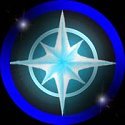 |
 |
 |
 |
 |
 |
 |
 |
 |
 |
 |
||||||||||||
|
To
properly view this page, you need the Lucinda Blackletter
font.
Installation
Instructions. DISCLAIMER: Some parts of the following rituals were taken and/or adapted from other sources. In those cases a numerical link leads to the appropriate reference and full credit to the original author. No copyright infringement is intended and if the author disapproves of my usage of their work, please e-mail me and I will take it down.
|
 |
 |
 |
 |
 |
 |